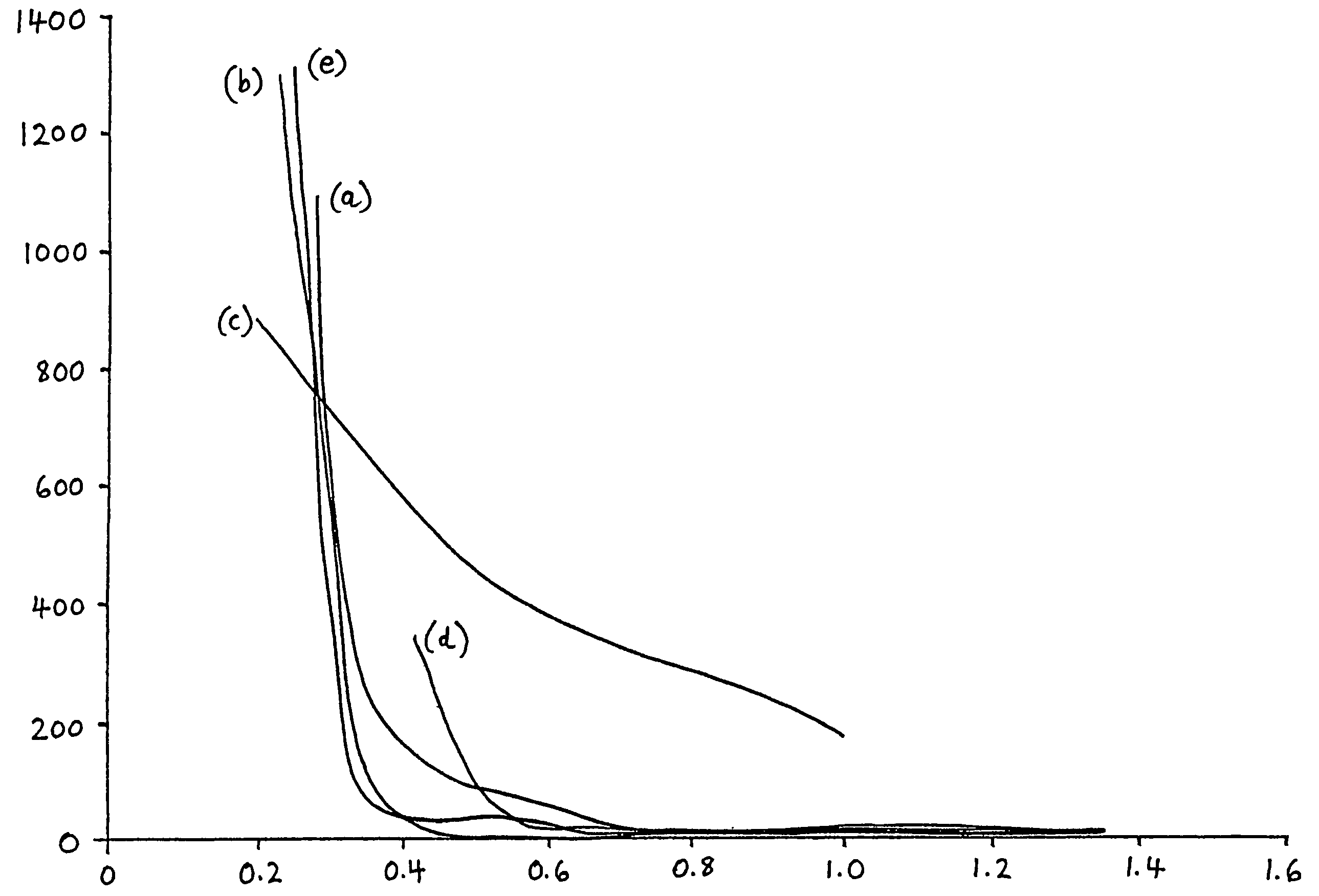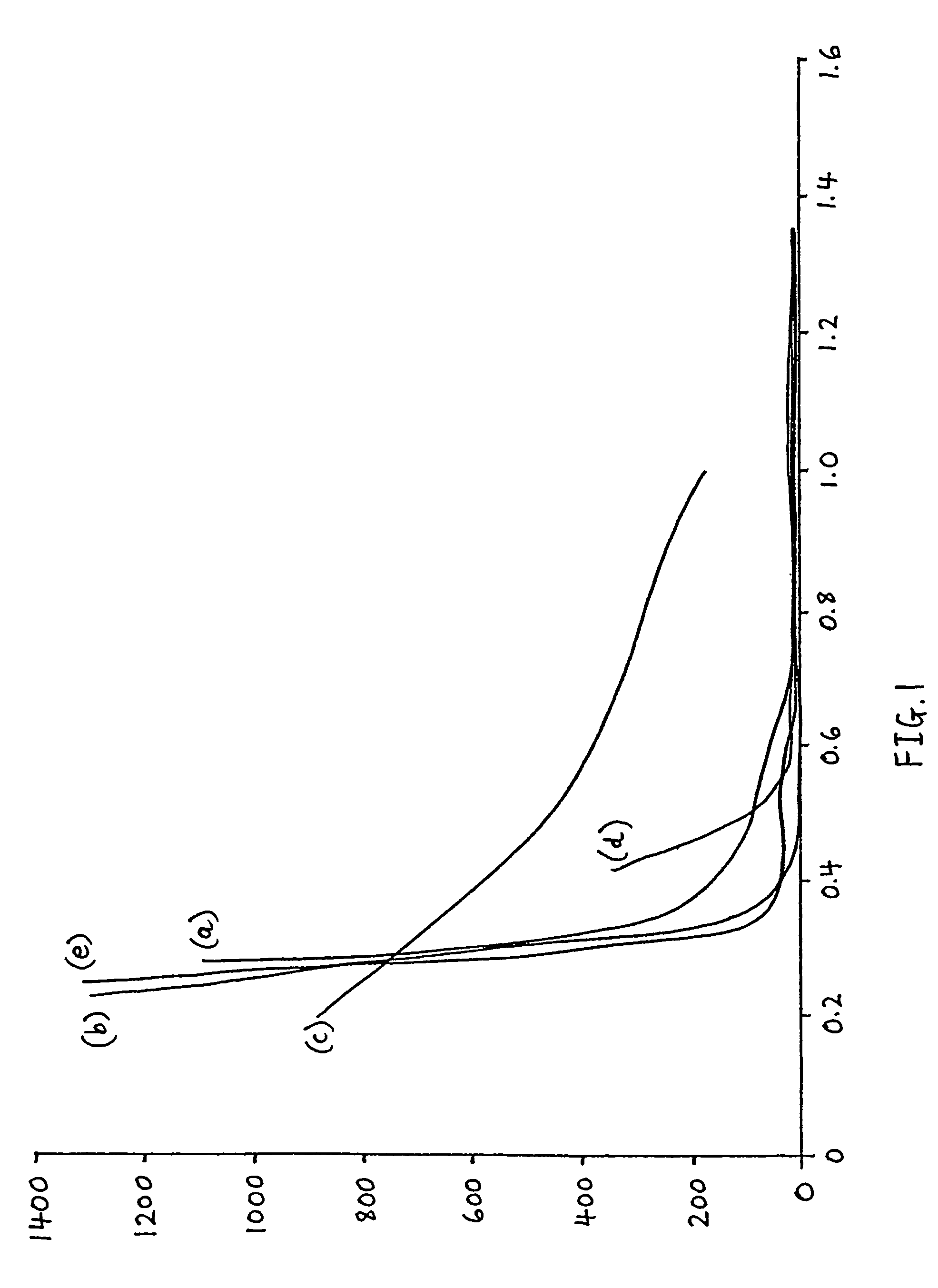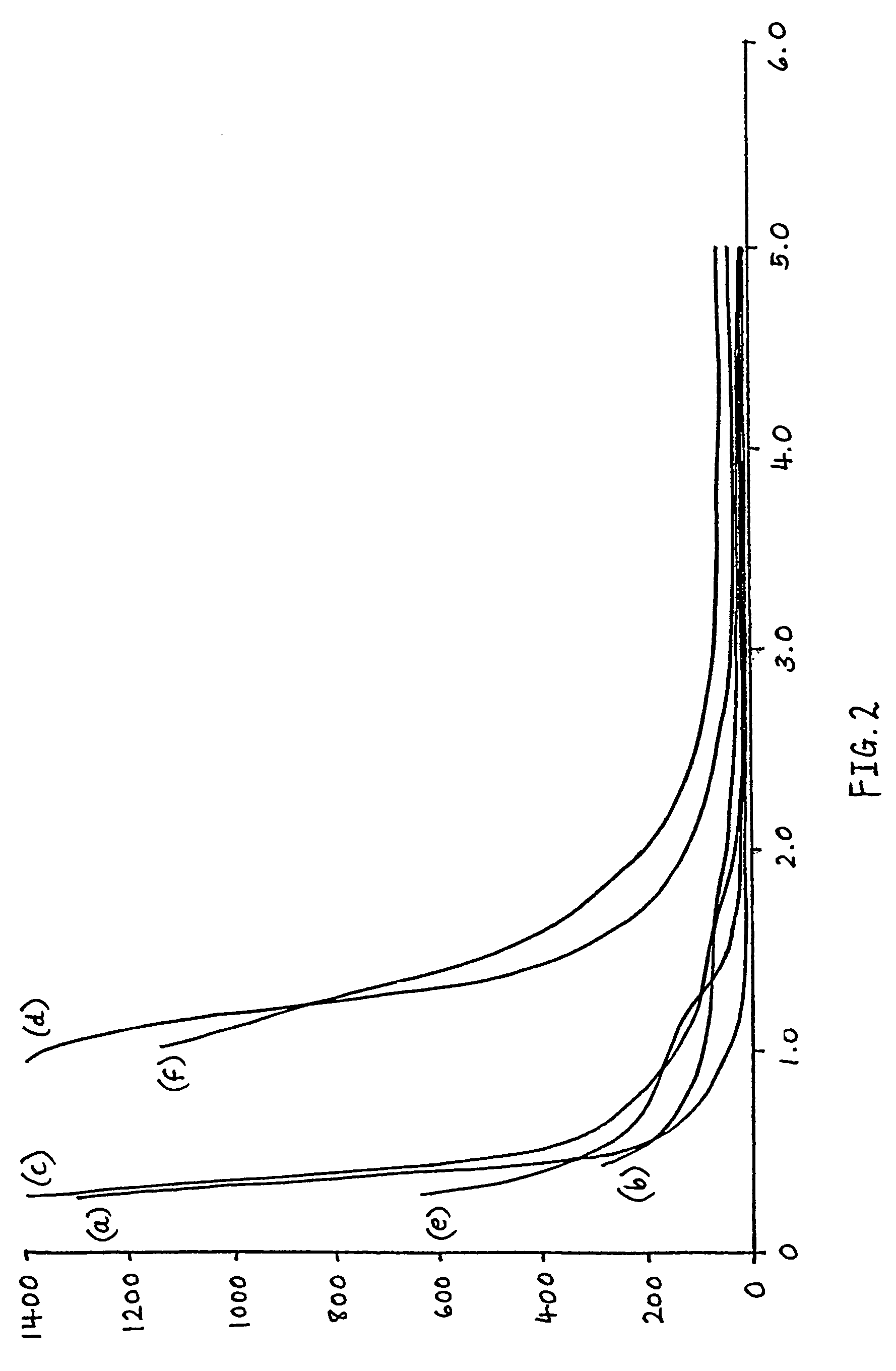Free flowing glass batch
- Summary
- Abstract
- Description
- Claims
- Application Information
AI Technical Summary
Benefits of technology
Problems solved by technology
Method used
Image
Examples
example 1
[0025]The first experiment to assess the performance of a soap solution for use in a method of the invention was based on the following test. A 150 g sample of dry glass batch was made up as follows: sand—91.9 g; soda ash—27.8 g; dolomite—22.8 g; limestone—6.4 g; saltcake—1.09 g. This sample was then thoroughly mixed for 20 minutes at typical room temperature (around 20° C.). 6 ml of water was added to the thoroughly mixed dry batch, and the resultant wet batch was then again thoroughly mixed whilst remaining at typical room temperature (about 20° C.). The wet batch was moulded into a cone having a height of 8 cm and a base diameter of 5 cm. The wet batch cone (having a temperature of less than 35° C.) was then left to stand for one hour at typical room temperature. After this period had elapsed, an indentor probe (of 4 mm diameter) was placed centrally on top of the batch cone, successive weights were added and the maximum weight that the batch cone could support was determined. Th...
example 2
[0026]The performance of a soap solution in maintaining the moist batch free flowing when it is pre-heated prior to supply to a glass melting furnace was experimentally assessed by testing samples of a number of the soap species contained therein as the surfactant of choice. To determine the effectiveness of solutions of these soap species upon the degree of hardening exhibited by an initially wet batch sample after heating, a procedure as described above was followed to produce moulded cones of moist batch, which were transferred to a hot plate at 300° C. and left for 30 minutes. When the 30 minutes had elapsed, the batch cones were subjected to the same indentor probe test as above. In this way, the performance and effect of each soap species upon inhibition of batch hardening could be observed.
[0027]To make the various soap solutions for each of the chosen soap species, an initial “mother soap solution” was prepared. The mother solution was diluted until its effect on the cone st...
example 3
[0029]The test procedure in this Example was similar to that described in Example 2, except that, to promote heat transfer from the hot plate to the batch sample, the batch sample was formed into a circular slab, 2 cm high and 6 cm diameter. The strength of the batch slabs was once again measured by placing an indentor probe (of 4 mm diameter) centrally on top of the batch slab and then adding successive weights. The batch used to form the slabs in this experiment was made up as follows: sand—91.9 g; soda ash—28.6 g; dolomite—22.8 g; limestone—5.6 g; gypsum—1.04 g. A number of additional soap species to the soap species used in Example 2 were synthesised (i.e. having a carbon content from C4 to C22) for testing. Again, the performance and effect of each soap upon inhibition of batch hardening could be observed. The results of the tests on the strength of batch slabs as a function of the strength of soap solution are shown in FIG. 2, in which the ordinate represents the weight (in gr...
PUM
| Property | Measurement | Unit |
|---|---|---|
| Temperature | aaaaa | aaaaa |
| Temperature | aaaaa | aaaaa |
| Temperature | aaaaa | aaaaa |
Abstract
Description
Claims
Application Information
 Login to View More
Login to View More - R&D
- Intellectual Property
- Life Sciences
- Materials
- Tech Scout
- Unparalleled Data Quality
- Higher Quality Content
- 60% Fewer Hallucinations
Browse by: Latest US Patents, China's latest patents, Technical Efficacy Thesaurus, Application Domain, Technology Topic, Popular Technical Reports.
© 2025 PatSnap. All rights reserved.Legal|Privacy policy|Modern Slavery Act Transparency Statement|Sitemap|About US| Contact US: help@patsnap.com



